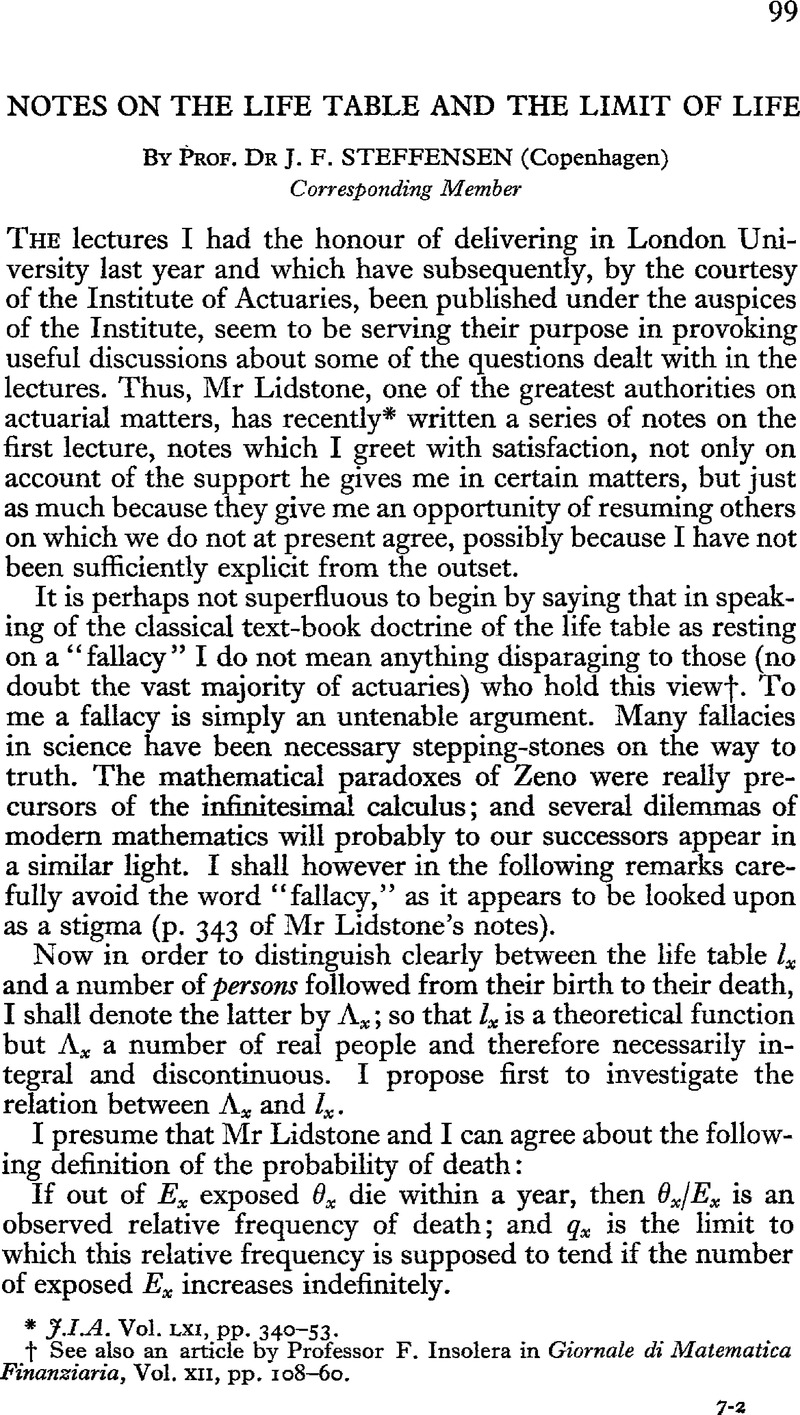No CrossRef data available.
Article contents
Notes on the Life Table and The Limit of Life
Published online by Cambridge University Press: 18 August 2016
Abstract

- Type
- Other
- Information
- Copyright
- Copyright © Institute and Faculty of Actuaries 1931
References
page 99 note * J.I.A. Vol. LXI, pp. 340–53.
page 99 note † See also an article by Professor F. Insolera in Giornale di Matematica Finanziaria, Vol. XII, pp. 108– 60.
page 102 note * Westergaard, Die Lehre von der Mortalität und Morbilität, 2nd ed. p. 214. See also note appended.
page 102 note † Westergaard, loc. cit. p. 309.
page 103 note * The fief of Baahus belonged then to Norway (at that time united with Denmark) but was later incorporated in Sweden. (TRANSLATOR'S NOTE.)
page 105 note * It may be pointed out that the effect on āx would be very considerably greater.
page 106 note * It is only fair to point out also that this difficulty, though it arises in the Makeham curves and others in which μx → ∞, would be avoided by restricting Steffensen's hypothesis to the case in which μ → a reasonable finite limit as x → ∞. For example we might let μ → 1000 in which case ā would → ·001 and a to a very minute quantity, or let μ → 10,000 and ā to ·0001. But this illustrates the essentially artificial nature of the hypothesis.
page 107 note * As to this point, see Professor Steffensen's remarks, post, p. 108. EDS. J.I.A.




